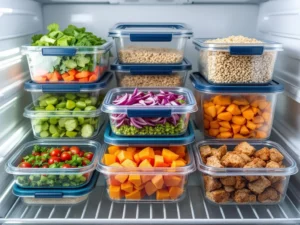
8. THEY DRIVE YOUR SENSES SENSELESS
Everyone loves a freebie, right? It feels like you are getting something for nothing but a study from Arizona State University says otherwise.
Those samples not only familiarize you with the taste and smell of that product but also encourage you to buy more food overall. The research also indicates that even the smell of cooking food might contribute to this effect and the stores know this all too well.
9. COUNTING THE CALORIFIC COST
If you are ever vigilant when it comes to checking the nutritional information of the packages of food you buy, then we salute you. However, with something like cookies or muffins, those in-store bakery items calorie count is strangely absent.
Knowing those numbers is critical: University of Mississippi researchers found that unhappy people, who are more likely to overindulge in comfort foods, ate 69 percent fewer calories when they checked the calorie content before digging in.
10. MAKING JUNK LOOK LIKE TREASURE
If it comes in a fancy package is must be worth your hard earned dollars, right? Maybe not, researchers at the University of Michigan recently found that food purveyors may actually use fancy fonts and labels to help justify higher prices.
The scientists theorize that attractive fonts and labels give people the perception that they are getting more value for the higher cost.
11. PLAYING THE CLAIM GAME
A study in the Journal of Consumer Research found that when people were asked to guess the number of calories in a sandwich coming from a “healthy” restaurant, they estimate that it has, on average, 35 percent fewer calories than they do when it comes from an “unhealthy” restaurant.
Just because the product claims to be healthy doesn’t necessarily mean it is.
12. THEY BULK YOU UP “IN BULK”
When buying in bulk, especially snacks and treats, you tend to fill your own bag with a big scoop and likely underestimate how much you’ve just served yourself.
A Cornell University study found that nutritionists who were asked to serve themselves ice cream with large bowls and spoons dished out about 57 percent more than those given smaller bowls and spoons.
Buy basic staples like spices, grains, and legumes in bulk, but make sure your snacks always come with serving sizes and calorie counts.
13. BUFFET? NO WAY!
If you have any desire to lead a more healthy lifestyle then you should avoid the Whole Foods buffet at all costs.
Cornell University researchers found heavier diners tend to overindulge in buffet settings. And while yes, the Whole Foods buffet does list their selections’ ingredients on the buffet’s ID labels, it fails to provide any nutrition information for any of the items you choose.
You are what you eat but that’s kind of hard when you have no idea what you are eating.
14. QUICK TO CASH IN
A 2010 survey found that 64 percent of people had purchased a ready-to-eat meal from a supermarket in the previous month, and experts estimated that the sector would grow to $14 billion by the end of 2011.
This section of the industry has seen massive growth as more and more consumers are looking for convenient and quick meals. Unfortunately, markups can be steep and nutrition is scarcely a concern for supermarkets looking to maximize profits.



























































